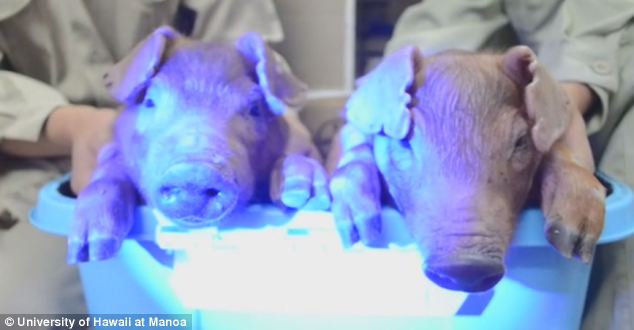Love and Compassion – The True Drivers of the Human Experience

“Love and compassion…are the ultimate source of human happiness, and the need for them lies at the very core of our being.” – Dalai Lama
From Prime Creator were birthed polarities from a field of compassion: Yin and Yang; Light and Dark.
We were born into this maya—this separation or illusion. The whole universe seems so real and finite to us, yet now many scientists believe we are part of multiple universes, a multiverse. The illusion runs even deeper into other dimensions, particles demonstrating intelligence, and holographic connectivity. Not just inside the universe—within our own bodies, we’re dancing with electricity.
“Each body is a universe, as good a universe as you could conceive.” – Swami Amar Jyoti
We are part of something so awesome, so inspiring, so massive and so fantastic!
Yet, so many, particularly Westerners, feel disconnected, fragmented, frustrated, fatigued, unsatisfied, unhappy, depleted, overworked, stressed and are suffering from sickness, are perhaps overweight and unhealthy.
Many people feel a spiritual hunger that is not being satisfied by their work, relationships, material ambitions or even just the battle to produce enough to sustain themselves.
They feel far removed from our cosmic connection and destiny.
For many, life is like climbing an endless mountain and never reaching the top.
Or, more like the Greek myth of Sisyphus. Sisyphus played tricks with the gods and was punished with having to push a rock to the top of a mountain, only to watch it roll back down again—and he was condemned to repeat this action forever.
Such spiritual disconnection and futility are deeply rooted within the collective unconscious. We resonate with Sisyphus as every day, we have the same routines and mundane tasks that stifle our creativity, we toil under the same often tedious, repetitive tasks and then have to >submit a yearly tax return.
For a peculiar reason of history, many kids grow up learning a dry ‘old’ science that highlights Newtonian physics and Descartean separation. René Descartes (1596–1650) was a French philosopher and mathematician who doubted most things, especially romantic and conceptual theories, and broke everything down to reductive conscious experience—“Cogito, ergo sum” (I think, therefore I am).
Such thinking had its time. Now we know we are actually vibrational beings sparkling and exploding with energy and life-force—our very make-up is spacious and intelligent. We swim within a unified field of intelligent energies that surrounds us, fills us and the space between spaces. Even that which appears solid and hard is really stardust made up of energy.
Behind all creation, is a love that unifies us and reminds us of our true nature. To understand this love, is to understand all existence and dhamma.
Even the story of Sisyphus can be turned into inspiration:
If the descent is sometimes performed in sorrow, it can also take place in joy…The struggle itself toward the heights is enough to fill a man’s heart. One must imagine Sisyphus happy.” – Albert Camus
The experience of human suffering is richly textured and a part of the human journey.
An examination of the Buddha’s life in service to humanity serves as an important source of understanding.
At 29, Prince Siddhārtha Gautama was called to escape the confines of his palace. He discovered a world of suffering. His spiritual journey thus began with a quest to end suffering.
Many life changes and spiritual awakenings occur when Saturn returns. Saturn Return is an astrological life threshold that brings restructuring, and often lots of difficulty and change.
(The planet Saturn reaches the same point in the sky as the time of a person’s birth and the person enters the next stage of life.) In Hindu astrology, a transition takes place every 7.5 years.
Gautama took his body to the limits of spiritual seeking and asceticism before accepting rice
and milk and devoting himself to the Middle Way.
At 35, he received the gift of enlightenment and an end to samsara at the Bodhi tree. Gautama discovered certain universal truths and a way to cut through the illusion.
Meditation is a huge aspect of this tradition.
An important aspect to Gautama’s practice is described as “the immeasurables”‘—(called the “Four Immeasurable Minds” by Thich Nhat Hanh)—love, compassion, joy and equanimity. The meditative form is like a prayer that calls out love:
1. May all sentient beings be happy.
2. May all sentient beings be free of suffering.
3. May all sentient beings never separate from bliss without affliction.
4. May all sentient beings be in perfect equanimity – free of attachments, prejudice and anger.
The teachings of the Buddha dissect existence into fundamental elements. Contrary to René Descartes, this dhamma is not pure bricks and mortar, or pure materialism; it describes the make-up of all reality in a holistic, all-encompassing way.
To walk the path of dhamma is to touch the loving field of energy in which we swim.
Ultimately it is touching the field of love and compassion from which we were birthed that is the source of happiness. All else is a reflection, an imitation or worse an idol. The true drivers that make us human are not money and acquisition of wealth—they are love and compassion.





